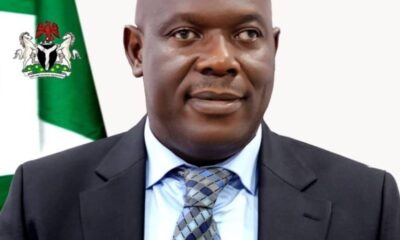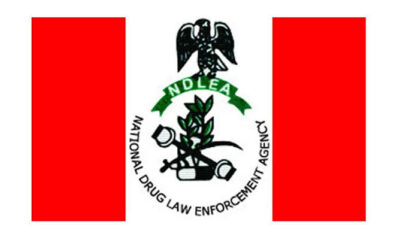Opinion
An Unforgettable 2021
As we prepare to transition to 2022, we are grateful for the friendships, strengthened partnerships, and progress accomplished toward U.S. and Nigerian goals this past year. On behalf of the entire U.S. Mission, I extend our warmest wishes for a healthy, peaceful, and joyous holiday season.
At the outset of 2021, we all had high hopes of controlling the COVID-19 pandemic. Now, another variant has come to the centre stage of global concern. However, thanks to renewed global health collaboration efforts, vaccine development and distribution is gradually making headway.
At the U.S. Mission, we are fortunate to have dozens of our staff working side by side with our Nigerian counterparts to monitor and respond to the pandemic. The strength of our support is reflected in the over $130 million we have contributed towards the COVID-19 health response and the hard work of staff who provide expertise, technical assistance, and logistics support. So far, we have pledged 36 million doses of COVID-19 vaccine to Nigeria — of which 18 million have been delivered to date, and the balance of 18 million will be shipped in the coming weeks. The pandemic has shown us how interdependent our world is. No one is safe until everyone is safe. Through robust global dialogue and ingenuity, we will continue to build global health security in the New Year together.
I firmly believe that, together, the world will overcome COVID-19, the same way that we have overcome other global health challenges. Together, we have brought HIV/AIDS to a point where epidemic control is within our reach. We achieved the eradication of wild polio virus as all of Africa is now certified as wild polio virus free. In Nigeria, the United States President’s Emergency Plan for AIDS Relief (PEPFAR) has invested more than $6 billion in the national HIV/AIDS response, where measures of our success include more than 1.6 million men, women, and children currently on HIV treatment. In partnership with the Federal Ministry of Health, we remain committed to completing the task of placing all people living with HIV on treatment and to strengthening capacity and commitment at all levels.
In fact, we have many reasons to remain positive about the progress made this year toward our shared goals. This past year, I had many opportunities to engage with Nigerians from all walks of life, from Kebbi to Akwa Ibom, and Ife to Jos. One common theme inevitably prevails – Nigerians seek a more secure living environment to raise and educate their children, earn a decent living, and strengthen their communities. We have done our utmost to address these concerns through a variety of mechanisms.
Countering violent extremism in Nigeria remains a top priority for both our countries. We were proud to support such efforts with the delivery of twelve Super Tucano aircrafts, which are already being employed to assist the Nigerian Air Force in their fight against violent extremist organizations. We have also worked with civil society, civilian law enforcement, the judiciary, and corrections officials to combat insecurity, strengthen effective and equitable access to the rule of law and justice, protect human rights, and together create a safer Nigeria.
Nigeria is the United States’ second largest trading partner on the continent, and we seek ways to further deepen this vital economic relationship. During 2021, we strengthened this partnership in important sectors such as agriculture, healthcare, information and communication technology, and renewable energy. On this latter issue, together our nations recognized the impact of climate change. We welcomed President Buhari’s commitment to strive for zero carbon emissions by 2060 at the COP26 summit, as the United States agreed to slash methane emissions by 30 percent by 2030. Separately, we welcomed the arrival in Nigeria of well-respected American brands such as United Airlines and Burger King. United Airlines’ direct flight from Washington, D.C. to Lagos – already booked solid for weeks ahead – is a testimony to our strong economic and people-to-people ties.
Simultaneously, we worked with organizations such as the U.S. Agency for International Development (USAID)-funded West Africa Trade Hub to co-invest in existing rice and tomato companies to improve yield, resilience, and to create more jobs for Nigerians. Perhaps the most significant U.S. economic and development commitment in the past year was the launch of a five-year, $2.17 billion Development Objectives Assistance Agreement between Nigeria and the United States. As USAID celebrated its 60-year anniversary in 2021, we similarly recommit to our shared goal of a healthier, more educated, more prosperous, more stable, and more resilient Nigeria – this new agreement helps us get there.
In 2021, and despite the challenges of COVID-19, we were extremely gratified by the great number of high-level, in-person and virtual meetings between U.S. and Nigerian leaders, which touched on our shared political, military, civil society, and economic goals. During his visit to Nigeria, Secretary of State Antony Blinken articulated our shared policy goals, and met with civil society and tech innovators who are contributing to a stronger, more inclusive democracy in Nigeria. Deputy National Security Advisor Jon Finer, Commander of the United States Africa Command, General Stephen J. Townsend, and others also visited Nigeria and similarly underscored the Biden Administration’s commitment to partnering with Nigeria to solve global challenges and advance shared interests.
As we look forward to the coming year, we are proud to be breaking ground on a new, more accommodating, and modern Consulate in Lagos that reflects the centrality of Nigeria to our foreign policy goals and will better serve the Nigerian public. Finally, we look forward to continuing our robust, inclusive, and issue-based dialogue at the African Leaders Summit hosted by President Biden. This ongoing conversation remains so vital to Nigeria’s own democracy strengthening efforts as the 2023 presidential elections approach.
On behalf of the U.S. Mission in Nigeria, I extend our appreciation for the friendships and partnerships which have formed throughout the year. We wish you a peaceful and prosperous holiday season and New Year.
Leonard, US Ambassador to Nigeria, wrote from Abuja.
By: Mary Beth Leonard
Opinion
Ndifon’s Verdict and University Power Reform

Opinion
As Nigeria’s Insecurity Rings Alarm

Opinion
The Girl Who Didn’t Dance
-

 Featured2 days ago
Featured2 days agoOil & Gas: Rivers Remains The Best Investment Destination – Fubara
-

 Nation3 days ago
Nation3 days agoOgoni Power Project: HYPREP Moves To Boost Capacity Of Personnel
-
Nation3 days ago
Hausa Community Lauds Council Boss Over Free Medical Outreach
-
Nation3 days ago
Association Hails Rivers LG Chairmen, Urges Expansion Of Dev Projects
-
Nation3 days ago
Film Festival: Don, Others Urge Govt To Partner RIFF
-
Nation2 days ago
MOSIEND Calls For RSG, NDDC, Stakeholders’ Intervention In Obolo Nation
-

 News2 days ago
News2 days agoNDLEA Arrests Two, Intercepts Illicit Drugs Packaged As Christmas Cookies
-
Rivers3 days ago
UNIPORT Moves To Tackle Insecurity … Inducts Security Experts

